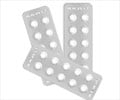Second blood pressure measurement is needed if the first reading is high to accurately identify pediatric hypertension.
- Children and teens showing high blood pressure readings on measuring for the first time should have a second measurement taken to correctly diagnose pediatric hypertension
- Pediatric hypertension is on the rise and accurate diagnosis and treatment of the condition early is necessary to reduce risk of future complications
Diagnosing Pediatric Hypertension – A Real Challenge
Blood pressure measurements in children and teens may be affected by factors such as anxiety. Also, definitions of hypertension in children vary based on the age, gender and height making it more difficult with unwieldy reference tables."Because an elevated first blood pressure in youth is common, correct identification of truly elevated blood pressure may be the first step to improve the recognition of hypertension in pediatric care," said Corinna Koebnick, PhD, MSc, of the Kaiser Permanente Southern California Department of Research & Evaluation. "If hypertension is missed, children and teens may not receive the counseling they need for lifestyle changes or medication."
The Kaiser Permanente Southern California Children's Health Study
The current study included children and teens between the ages of 2 to 19 years in Southern California who are members of the Kaiser Permanente. The cohort follow-up study was done through passive surveillance of clinical care data using the electronic health record system.The final group of 755,795 children was monitored during a 4-year period, from January 2012 to December 2015.
The key observations of the study in children aged 3 to 17 years included the following
- 24.7 percent showed at least a single blood pressure reading falling in the hypertensive range
- Less than half of the children who had their blood pressure screened would be correctly diagnosed taking into account only the first blood pressure reading during the visit
- Only 2.3 percent of youth show persistent hypertension over time
Following this study, Kaiser Permanente in Southern California has placed ‘flags’ on its electronic health records alerting clinicians to when a second blood pressure reading is advised. Additionally, decision-support tools were also put in to help doctors decide if and when further evaluation would be needed.
Earlier Studies by Kaiser Permanente on Hypertension Care
The findings of the current study are in addition to earlier studies that aimed to improve hypertension diagnosis and treatment in the population- Children having an initial increased blood pressure at the doctor's office are unlikely to receive the suggested recommendations regarding monitoring of blood pressure values
- In a separate study, it was found that allowing blood pressure screenings to be done in non-primary care settings might be useful in identifying more adults with hypertension
Tips to Diagnose and Manage Pediatric Hypertension
The following measures may aid in improved diagnosis and care of hypertension in children- Educating parents on the risk factors of pediatric hypertension – family history of hypertension, obesity, certain endocrine disorders, renal disease, and some heart diseases
- Importance of getting adequate sleep and rest
- Educating parents/teachers about not putting undue pressure on children to overachieve
- Lifestyle changes should be the first line of management; only if these fail should blood pressure lowering medications be considered
- Involving the entire family in lifestyle changes such as healthy diet and exercise to improve compliance in the child
References:
- AAP Publishes New Guidelines on Identifying and Treating High Blood Pressure in Children - (https://www.aap.org/en-us/about-the-aap/aap-press-room/pages/AAP-Publishes-New-Guidelines-on-Identifying-and-Treating-High-Blood-Pressure-in-Children.aspx)
















